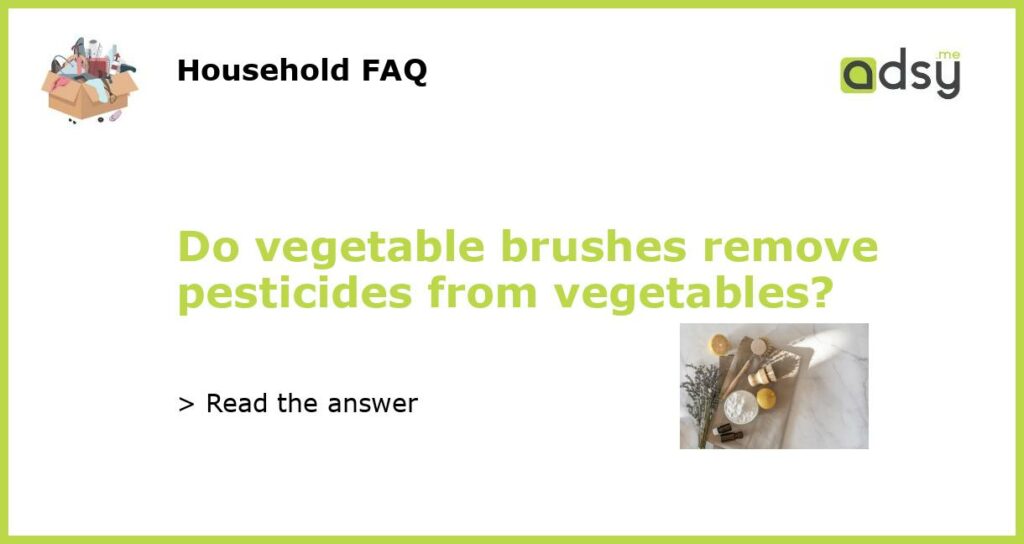The effectiveness of vegetable brushes in removing pesticides
Vegetable brushes have long been touted as an effective tool for removing dirt, bacteria, and pesticide residues from the surface of fruits and vegetables. But just how effective are they in removing pesticides?
Understanding how pesticides are applied
Before delving into the effectiveness of vegetable brushes, it is important to understand how pesticides are applied to fruits and vegetables. Pesticides can be divided into two main categories: systemic and contact. Systemic pesticides are absorbed by the plant and become part of its internal chemistry, making it difficult to remove them completely. Contact pesticides, on the other hand, remain on the surface of the plant and can be more easily removed through washing and brushing.
The role of vegetable brushes in pesticide removal
Vegetable brushes, commonly made with stiff bristles or natural fibers, are designed to physically remove contaminants from the surface of produce. When used correctly, they can be effective in removing certain types of pesticide residues from fruits and vegetables.
Factors affecting the effectiveness of vegetable brushes
While vegetable brushes can help reduce pesticide residues on produce, their effectiveness depends on several factors. Firstly, the type of pesticide used plays a significant role. As mentioned earlier, systemic pesticides are more difficult to remove compared to contact pesticides.
Secondly, the duration and intensity of the brushing can also impact the removal of pesticide residues. A gentle scrubbing with a vegetable brush may not be sufficient to remove all traces of pesticides, especially if they have been absorbed by the plant.
Lastly, the physical characteristics of the produce itself can affect the effectiveness of vegetable brushes. Fruits and vegetables with irregular surfaces or crevices may require more thorough brushing to ensure all pesticide residues are removed.
Alternative methods for pesticide removal
While vegetable brushes can help reduce pesticide residues on produce, they may not be able to completely eliminate them. For those seeking alternative methods, there are a few options worth considering:
– Soaking: Soaking fruits and vegetables in a solution of vinegar and water has been shown to be effective in reducing pesticide residues. The recommended ratio is one part vinegar to three parts water, and the produce should be soaked for at least 15 minutes before rinsing thoroughly.
– Commercial produce washes: Certain commercially available produce washes claim to remove pesticide residues effectively. However, it is important to read and follow the instructions carefully to ensure proper usage.
– Buying organic: Opting for organic produce, which has been grown without synthetic pesticides, is another way to reduce exposure to pesticide residues. While organic fruits and vegetables may still have trace amounts of natural pesticides, they are generally considered to be safer alternatives to conventionally grown produce.
In conclusion, vegetable brushes can be effective in removing certain types of pesticide residues from the surface of produce. However, their effectiveness may vary depending on factors such as the type of pesticide, brushing technique, and the physical characteristics of the produce. For those looking for alternative methods, soaking produce in a vinegar-water solution or opting for organic produce are other options to consider. Ultimately, it is important to remember that proper washing and careful food preparation practices are key in reducing pesticide exposure.






